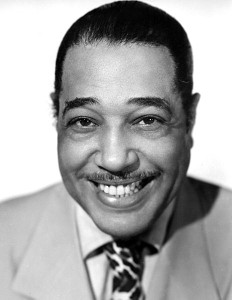Jazz Standards : Take the ‘A’ Train.
The story of how Duke Ellington’s signature tune, Take The ‘A’ Train was written is a classic.
Billy Strayhorn, future Duke’s right hand man, was said to have written the piece after Ellington had offered him a job as a writer, arranger and piano man , sending money for him to travel from Pittsburgh to New York and then up to Ellington’s apartment in Sugar Hill. Billy was a teenage soda jerk and drugstore delivery boy by day and a musician by night when he met The Duke.
His route there included travelling on the then new A Line subway that ran the length of Manhattan, from the Hudson Terminal (later site of the World Trade Center) out to Harlem. The A train connected Harlem, Manhattan’s central black community to areas of Bedford-Stuyvesant that offered residential opportunities for African Americans not found in most areas of New York City.
The story goes that Strayhorn composed it in his head at a party, and then put it all on paper when he was done. He said all of his most meaningful work was written this way.
In The World of Duke Ellington by Stanley Dance, there’s a story about choosing the ‘A’ train over the ‘D’ train. Strayhorn said he kept hearing about Harlem-bound folks who took the ‘D’ train and would wind up in the Bronx, as it turned off at 145th. “If you want to go to Sugar Hill, you need to take the ‘A’ train!”

Duke Ellington publicity picture, 1940s
It’s a cute story, but The Duke happened to be over in California at the time playing at the Casa Manana in Los Angeles and broadcasting nightly. There was an ASCAP strike at the time so Ellington could not air his popular compositions, so he’d brought in Billy Strayhorn to help him write a whole new set.
Billy wrote lyrics for the song too, but the ones were more familiar with, thanks to Ella Fitzgerald’s hit recording, were written by another member of the Ellington band, vocalist Joya Sherrill. She wrote lyrics based on what she heard on the radio in her home in Detroit – the tune was already becoming a radio hit as an instrumental. “Hurry — take the ‘A’ train to get to Sugar Hill, way up in Harlem.” Sugar Hill was known as the home to prominent figures of the Harlem Renaissance, so straight away the song was quietly established as an African American anthem.
Another angle on the story is that Strayhorn didn’t think much of his new tune. He’d been a fan of Fletcher Henderson and thought he’d try out an arrangement that made use of Henderson’s arrangements for trumpets, trombones and saxophones. The story goes that Ellington’s son fished it out of a trash can – Billy had thought it a little derivative.
Very soon the piece was leading off the show – The Dukes’ opening piano lick and a fabulous solo by trumpeter Ray Nance. The latter was an improvised solo that he would later repeat note perfectly, much to the scorn of some of the purists.
The clip above, of Duke Ellington is full flight, is a beauty, isn’t it. WAtching it is pure pleasure. It’s from an old wartime flag-waver movie called Reveille with Beverly, starring a good deal of the top swing, jazz and pop stars of the day, including Frank Sinatra and Count Basie.
Later on almost everyone seemed to be giving the tune a go – soon the likes of Sun Ra, Eric Dolphy and Charles Mingus were stretching it out to an eternity with atonal solos and extended jams while Bob Wills and His Texas Playboys turned it into a bit of a hoedown. On Eurmir Dedato’s funk jazz version the train gets lost completely!
For me it’s just the most uplifting, get going song in musical history. Add this to Ellington’s inimitable charm, manners, and elegant style, and you have a one of the all time greats.
ABOUT THE AUTHOR




